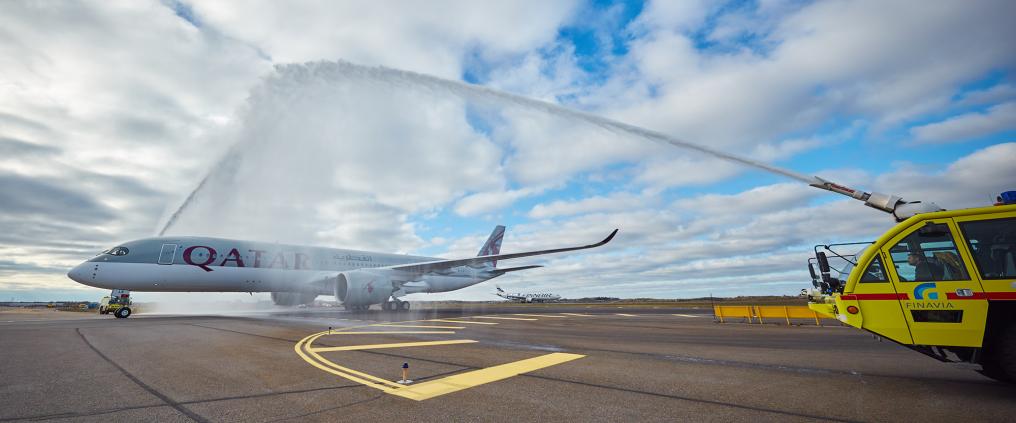A water salute can be arranged in three situations. When a new aircraft type, such as Finnair's A350 a little more than a year ago, lands at the airport for the first time, it receives a water salute during its first flight.
A water salute is also given when a new route is opened or when a new airline starts to operate at Helsinki Airport, as Qatar Airways did last autumn. Thirdly, a water salute is given during the last flight of a retiring captain.
“We also arranged a water salute when Finland won the Ice Hockey World Championships. In this way, the airport wanted to pay tribute to the winning team. However, we do not want the tradition to suffer from inflation by arranging too many water salutes,” says Marko Haapanen, chief fire officer at Finavia.
This year, there have been five or six water salutes, which is much higher than in previous years. There can even be years without any water salutes.
“To us rescue employees, a water salute is a routine activity, and everyone knows how to give one. Or if there is someone who does not, they sure will hear about it,” laughs Haapanen, together with firemen Jarno Halme and Kari Partanen and fire divisional officer Kim Waenerberg.
What is more, no water salute has ever gone wrong. Before each water salute, firemen will check the place where the salute will be given; no other preparations are necessary. After all, the use of water cannons is trained regularly.
How to plan a water salute
When information about a flight requiring a water salute is obtained, the rescue department contacts air traffic control, which then reports the landing time and taxiway of the flight. A water salute is usually given when a plane exits the taxiway and accesses the apron area.
Vehicles are driven on both sides of the taxiway and water cannons are set at such an angle that the water jets extend over the plane.
“There is one of us in front of the plane to see that the jets are slightly crossed so that they do not break when hitting each other. The jet direction cannot be easily seen from the vehicles. The person in front counts down from five to zero, and both vehicles fire their jets at the same time,” Haapanen says.
In cold weather, the location of a water salute needs to be planned more closely because ice cannot form in the busy apron area. In this, cooperation with apron control is required.
In principle, it is possible that vehicles need to stop a water salute before its completion if there is an alarm of an accident risk. However, there are always three vehicles on stand-by.
Anna.aero, an aviation e-journal, ranks the best water salutes of each week. Finavia's fire-fighters won the contest in week 41 with their water salute for Qatar Airways.
A water salute usually takes 15–20 seconds. At full power, the water jet extends over 75 metres. Two vehicles consume approximately 5,000 litres of water.



